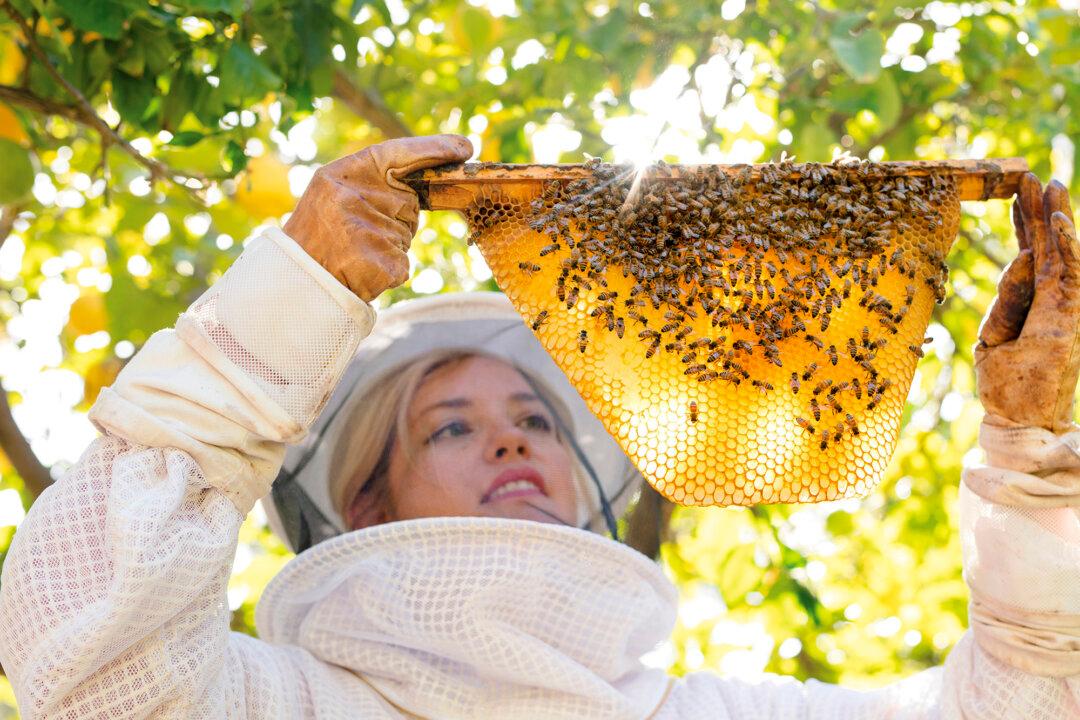When Tama Matsuoka Wong looks out at her backyard meadow, where others may see an unruly mess of weeds gone wild, she sees a treasure trove. It contains over 225 native and non-native plants, which she observes, identifies, and forages daily. “I have to do foraging,” she said. “It gets me out, rejuvenates me. After I do some busy or mundane task, I’ll go out and cut juniper.”
New Perspectives
Though Wong didn’t know the term at the time, she realized she had been foraging since she was a little girl. Growing up in New Jersey, her mother regularly sent her and her brother out to pick wild blackberries or dandelion leaves.After working as a corporate lawyer in New York, Tokyo, and Hong Kong for more than 25 years, Wong moved back to New Jersey with her family in 2001 and acquired a 5-acre floodplain meadow. She invited some friends who knew about the local plants, and they told her that she had to get the Japanese knotweed under control. “I went on a rampage cutting it,” she said. Then, five years later, some Japanese friends came to visit.
“They bowed and said, ‘We’re so sorry this plant is bad for you,’ and then one of them said, ‘You know, in Japan, we eat this. It’s supposed to be really good for you.’” Wong had an “aha” moment—she realized she could use the invasive plant for something else.
Fascinated, she started studying field guides, attended local classes, and invited anyone who knew about plants to the meadow so she could learn from them. As her knowledge and confidence grew, so did her enthusiasm. “I got so excited and started telling everyone,” she said. “So now organic farmers and conservationists call me and say, ‘Come get this and that,’ which they don’t want. And at the same time, chefs are asking me because they do want them.”

A Delicious Collaboration
Wong began supplying wild foods to top chefs in New York by accident. Her first client? Two-Michelin-starred Restaurant Daniel.At the urging of a friend, she’d brought a few sprigs of anise hyssop from her meadow to the reception desk, explaining, somewhat apologetically, that she would be dining there later with friends and wondered if the chef could do anything with the plants. Chef de cuisine Eddy Leroux, who admitted he knew nothing about the herb, was intrigued by the challenge.
“He made us some amazing dishes with it,” Wong recalled. When she thanked the chef after the meal, he asked her, “What else do you have in your meadow?” 225 different plants, she told him. “Bring me everything!” he replied. “I will pay you.” She agreed—with a catch. She didn’t want payment: “I just want recipes!”
Thus began a collaboration that continues to this day. She would bring him plants, they would experiment together, and he kept a giant dossier documenting their discoveries. In 2012, they published a collection of their best in a cookbook, “Foraged Flavor.”
Now, through her small business Meadows and More, Wong supplies a number of restaurants, including Korean, Japanese, and Nordic, and online grocery retailer FreshDirect. For those chefs, part of the buzz surrounding foraged ingredients is due to their being hyperlocal, seasonal, and only available for a short window of time. “When something is in season and at its peak, it has so much more freshness, flavor, and realness than when it’s been shipped and warehoused,” Wong said. “A lot of the hot-house-grown stuff you get now is so devoid of flavor—it just all tastes the same, like water.”
The flavor complexities of wild foods are addictive, she said, but also hard to describe. There’s not a single flavor note—“it’s more like music, or wine. The flavor will start with one thing and then trail to something else.”

A Prescription for Sustainability
One day, to describe what she does for her meadow, and now for others who hire her business for consultations, Wong made up the term “meadow doctor.” Unlike a gardener or regenerative farmer, she’s not involved in the creation of the wild meadow. “The doctor doesn’t create the patient,” she said. She’ll make a diagnosis—“What are the plants in here, how’s everybody getting along, do we have a nice gut biome?”—and prescribe some lifestyle changes if necessary.Going from a corporate lawyer to a meadow doctor may seem like a big shift, but Wong says the two jobs are not that different. “For one thing, you have all these categories in Latin!” she said with a laugh. “You’ve got to pay attention to detail.” She worked in developing markets, “and if you want something to take hold, you need to have structure.”
Part of the structure she offers is her “sustainability code,” which classifies plants according to their status as native or non-native, specialized or generalized. Slow-growing and specialized plants like trillium shouldn’t be picked at all, while a fast-growing invasive like garlic mustard can be picked at will.





